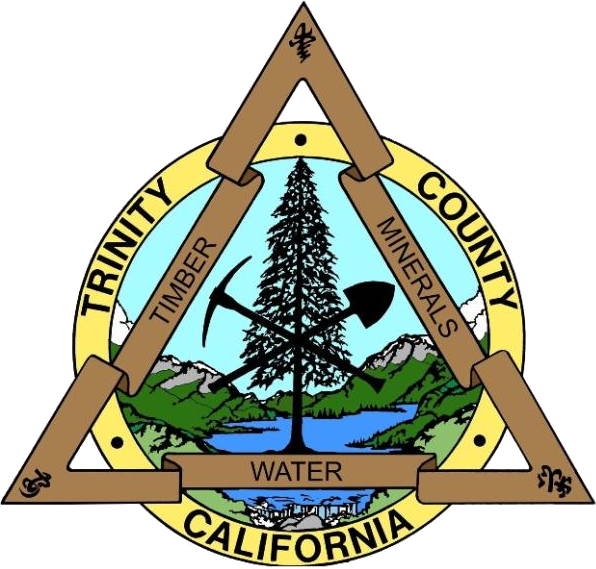Road Maintenance
The Road Maintenance Division of the Department of Transportation is responsible for the overall maintenance and repairs of County roads, bridges, guardrails, signs, etc. We realize that we cannot cover every inch of road at all times. Therefore, if you see a roadside problem (i.e. pot hole, guardrail down, etc.), please kindly report it using our online "Report a Problem" submittal form or simply contact us.
Upon notice, the county road staff completes repairs on all roads based on the available funding, volume of traffic and corresponding road condition; unfortunately, our backlog of road repairs for the 692 miles of county-maintained roads and 101 bridges is very extensive. Based on budget cuts, staffing losses and the reduction of our construction equipment due to strict California Air Board (CARB) regulations, we currently have a more limited capacity to maintain the extensive network of county roads. As an example, in 1998 we had 45 road maintenance workers, we now have only 17 to maintain the same miles of county roads. Yet, the cost for materials and equipment continues to increase while our funding for the same volume of road repairs is continually being reduced.
Due to our diminishing road funds, it has become nearly impossible to make the necessary repairs to all of the roads, as we would like to do. We are now forced to prioritize funds and concentrate our limited resources on roads with very large traffic volumes, the routine road repair practices were modified to meet the increasing demands for repairs based on the severity and level of road usage, as outlined below.
Notification - When we receive notice of a road issue (non-emergency) either through our Transportation webpage, a phone call, or in person, our standards require that we respond to each call in a timely manner. This means either within the same day during the weekdays, or if it is on the weekend within 72 hours. Accordingly, requests for road repairs and related complaints are prioritized in the following manner:
Priority 1 - Emergency Response Time: Immediate
Emergency work orders take priority over all other work and require immediate action to address situations that present immediate or imminent danger to life, health, safety, security, or significant damage to buildings, equipment or other property.
Priority 2 - Urgent Response Time: Within 48-72 Hours
Urgent work orders are unscheduled and reactive and may pose a threat of personal injury, cause property or equipment damage, or serious disruption of service. This type of work demands prompt attention to supplement emergency repairs or prevent a subsequent emergency. Urgent work orders may include responses to safety deficiencies and regulatory violations.
Priority 3 - Scheduled Response Time: Within 10-15 Days
Scheduled work orders address date-sensitive requests. This is work that may require prior coordination and lead time to procure supplies and/or services. Scheduled work orders include preventive maintenance services intended to protect and preserve physical assets and reduce the threat of major equipment breakdowns.
Priority 4 - Routine Response Time: More than 20 Days
Routine work orders address service or project requests that do not pose a threat to life and property or disrupt Road operations. These requests are put in the job queue and are processed in the order they are received.
Accordingly, requests for road repairs and related complaints are prioritized in the following manner:
First priority - The higher volume roads such as Minor Arterials and Major Collectors (roads with the most traffic), are addressed due to our risk exposure, and we patch these roads as soon as we can mobilize a crew.
Second priority - The roads patching list includes requests for the remaining roads, which are classified as Minor Collectors and Local Roads (based on lower traffic volumes); the requests go into a list that is addressed on a first come, first served basis.
Snow Removal
Road Maintenance Division of the Department of Transportation has developed a Snow Plow Policy and snow plow priority maps. Maps may change due to changes in staffing and / or scheduled school bus routes. Maps have four different priority classifications for county roads:
Priority 1 Roads: Are Major Arterials and will be the highest priority roads for the county road personnel to keep open during a large storm event.
Priority 2 Roads: Are also high priority roads, many of which are school bus routes and emergency services locations, that road personnel will be focusing on during storm events.
Priority 3 Roads: May be plowed during storm events, as time permits, but overtime will not be authorized to plow these roads. Priority 3 roads will not be plowed weekends or holidays, and may not be plowed until priority 1 and 2 roads are cleared.
Priority 4 Roads: Are "Not Winter Maintained," and may not be plowed at all. Some of the "Not Winter Maintained" roads may be opened when all other plowing and storm cleanup has been completed.
The Snow Plow Policy and associated maps are found below as well as a pdf copy of our County Maintained roads list with the Snow Policy priority numbers identified.
